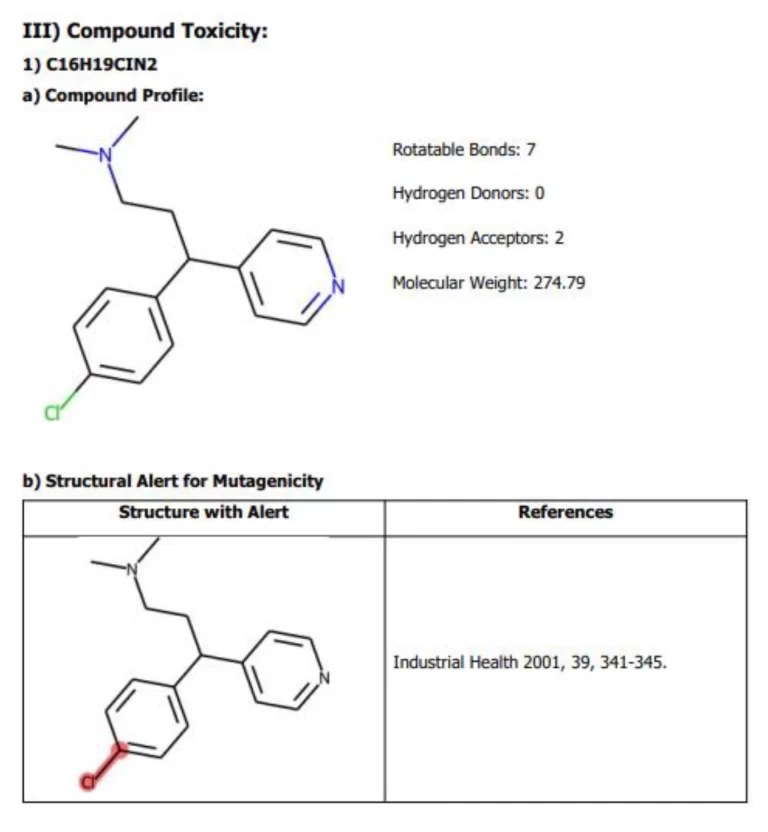REVO - Toxicity Prediction Platform
A toxicity prediction platform is a computational tool that uses machine learning algorithms to predict the potential toxicity of a chemical compound. These platforms are typically trained on large datasets of known toxic and non-toxic compounds, and can be used to predict a wide range of toxicity endpoints, such as acute toxicity, carcinogenicity, and reproductive toxicity.
Toxicity prediction platforms are important for a number of reasons. First, they can help to reduce the need for animal testing, which is expensive, time-consuming, and ethically controversial. Second, they can be used to screen new chemicals for potential toxicity before they are released into the environment or used in commercial products. Third, they can be used to identify the most toxic chemicals in a mixture, which can help to inform risk assessment and remediation efforts.
There are a number of different toxicity prediction platforms available, both commercial and open source. Some of the most well-known platforms include:
- ProTox-II: A web-based platform developed by the Charité University Medical Center in Berlin, Germany. ProTox-II can predict a wide range of toxicity endpoints for over 100,000 different chemicals.
- Tox21: A platform developed by the US Environmental Protection Agency (EPA). Tox21 can predict the activity of chemicals against a panel of 12 different biological pathways.
- OECD QSAR Toolbox: A free and open source platform developed by the Organisation for Economic Co-operation and Development (OECD). The OECD QSAR Toolbox includes a variety of tools for predicting the toxicity of chemicals.

Benefits of using toxicity prediction platforms
There are several benefits to using toxicity prediction platforms, including:
- They can help to reduce the need for animal testing.
- They can be used to assess the toxicity of chemicals that are difficult or expensive to test in traditional ways.
- They can be used to predict the toxicity of chemicals at very low doses, which is important for assessing the risks of environmental exposure.
- They can be used to identify potential drug candidates that are less likely to be toxic.
How to use a toxicity prediction platform
To use a toxicity prediction platform, users typically need to provide the platform with information about the chemical compound of interest. This information can include the chemical structure, molecular formula, or name of the compound. The platform will then use this information to predict the potential toxicity of the compound.
The output of a toxicity prediction platform typically includes a prediction of the likelihood that the compound will cause a particular toxicity endpoint. For example, the platform may predict the probability that the compound will cause cancer, or the dose of the compound that is likely to cause acute toxicity.
It is important to note that toxicity prediction platforms are not perfect. The accuracy of the predictions can vary depending on the platform used and the quality of the data that the platform is trained on. Therefore, it is important to use toxicity prediction platforms in conjunction with other methods of toxicity assessment, such as in vitro and in vivo testing.
Applications of toxicity prediction platforms
Toxicity prediction platforms can be used for a variety of applications, including:
- Drug discovery: Toxicity prediction platforms can be used to screen new drug candidates for potential toxicity before they are tested in animals or humans. This can help to reduce the risk of toxicity and save time and money.
- Chemical safety assessment: Toxicity prediction platforms can be used to assess the safety of chemicals that are used in commercial products or released into the environment. This can help to identify and manage potential risks to human health and the environment.
- Environmental toxicology: Toxicity prediction platforms can be used to study the effects of chemicals on ecosystems. This information can be used to develop policies and regulations that protect the environment.
Toxicity prediction platforms are a valuable tool for scientists, regulators, and industry stakeholders who are involved in the development, assessment, and management of chemicals. These platforms can help to reduce the need for animal testing, screen new chemicals for potential toxicity, and identify the most toxic chemicals in a mixture.
REVO, our Toxicity Prediction platform uses both Expert Rule based as well as Statistics based evaluation for Genotoxic Mutagenicity and Carcinogenicity in accordance with ICH M7 guidelines. The QSTR models used in REVO are validated as per REACH guidelines as recommended by OECD Guidance.
You can also contact us for Training on Toxicity Prediction Platform.
Linkedin Link
Medical Device Testing
Laboratory Testing

SCS Blog Category
Blog - ACUTE TOXICITY STUDIES
Blog - Biodegradability Testing – Chemical Impact
Blog - Environmental Fate & Toxicology Testing
Blog - In Vitro Studies
Blog - Laboratory Testing & Analysis
Blog - Medical Devices
Blog - OECD GLP
Blog - Scientific
Table of Contents
Toggle
